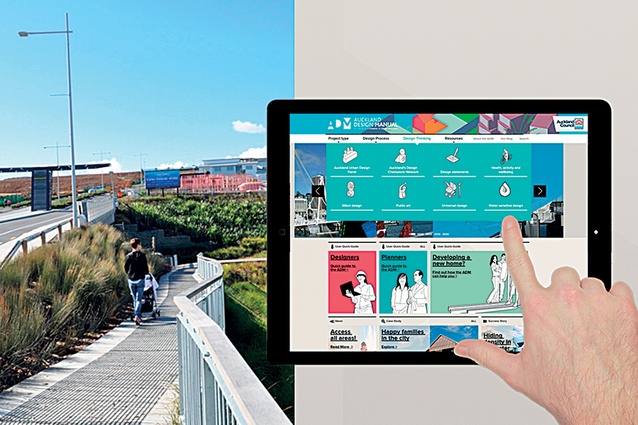Questions and answers
A new online resource is a much-needed tool to spread best practice, writes Auckland Design Manual (ADM) urban design programme leader Simon Harrison, the architect given the responsibility of driving a key element of the Auckland Plan.
For a city celebrated for its outstanding natural features, Auckland’s built environment has often fallen short of nature’s high standards. Auckland has suffered from a lack of integrated design thought. Often our planning and design policies and processes have failed to consider the inter-related nature of our streets, open spaces and buildings.
The Auckland Design Manual (ADM) sets out to fix that. The Auckland Design Manual provides a mass of information online in the form of guidance, tips, advice and best practice, using case studies and worked examples to communicate the underlying ideas. We sometimes refer to the ADM as a one-stop shop for information, but it’s much more than that. It also provides a framework for how we structure and think about the design of our city.
It helps people recognise the bigger picture, so that all design elements can be integrated more effectively for better outcomes. For example, we have split the design of buildings into six elements. From the outside-in these are: site design, building placement, street to front door, outdoor spaces, accommodating the car, and finally, the building itself. Those elements are the same for every building, whether its purpose retail, industrial or residential.
The intention here is to better enable consistency; this isn’t about standardisation or diktat. The creative process is, by nature, a lot more personal, and it is the last thing a council should own. With everybody using the same framework when discussing design with council, it becomes easier for us all to understand the ambition and intended outcomes – and that, in turn, helps us get past those subjective elements of the design and consents process that can be quite fractious.
Combined with the various examples and case studies, designers have a powerful tool to provide their clients with real-world proof of what works. Working in the opposite direction – developers can see what can be achieved, and then be inspired to think outside, or at least expand, their comfort zone.
To be an effective learning tool the ADM has to have integrity, so case studies not only provide information on what worked well, but also give pointers on what could have been done differently. Good design results from an exchange and testing of ideas. Through the ADM’s interactive nature, the industry can continue to evolve and learn from local, national and international best-practice and turn ideas and concepts into reality.
There are signs the industry is embracing the ADM. It provides a great platform to display projects. We are always keen to hear from anybody wanting to showcase their project as a case study. Strictly speaking, the reason behind this is to share our learning and inform the conversation. But it’s a pretty good marketing tool for creative ideas as well.










